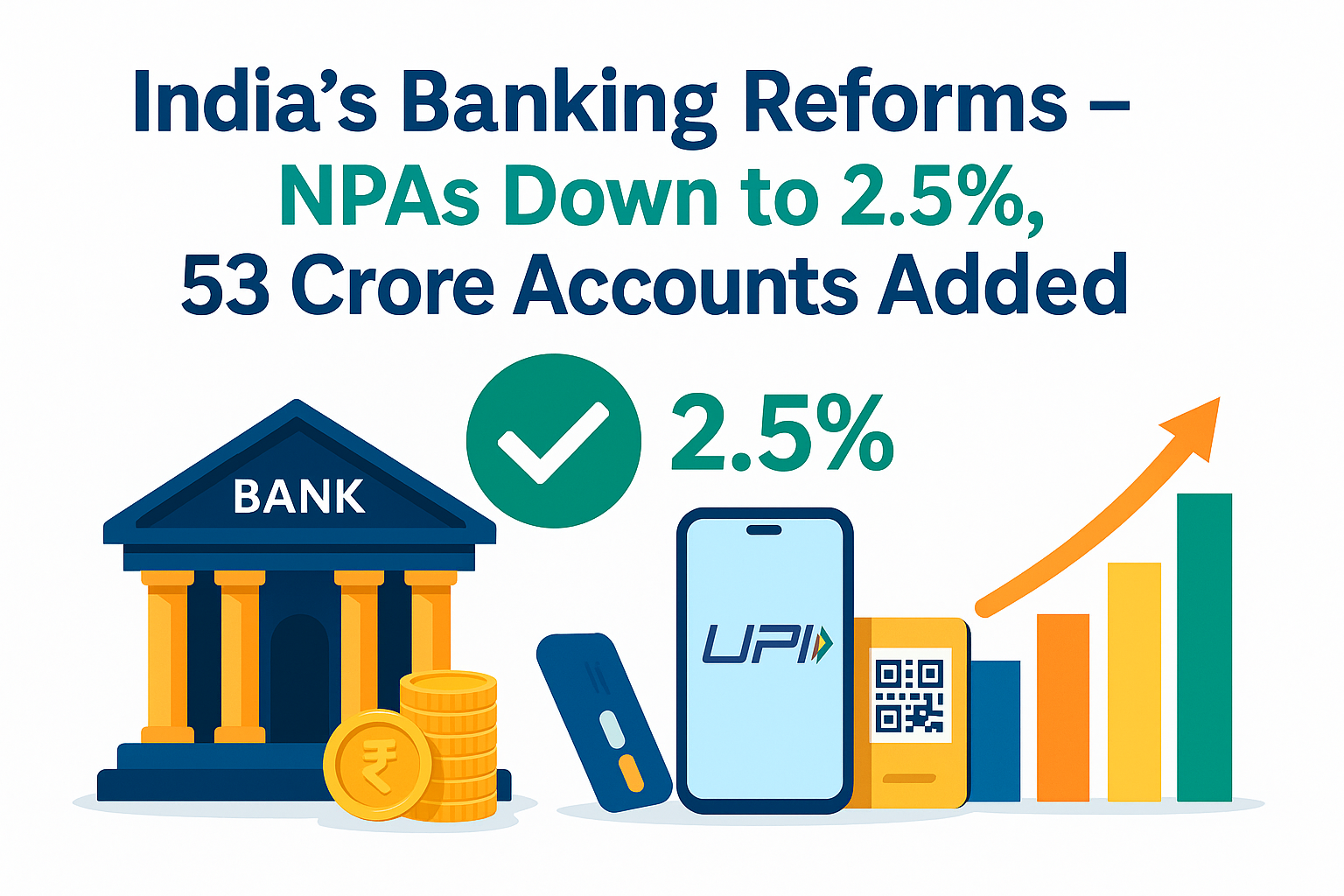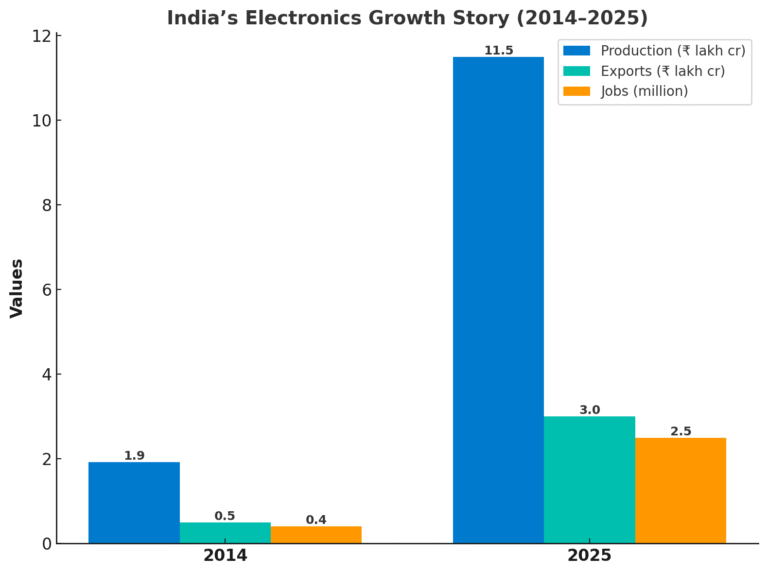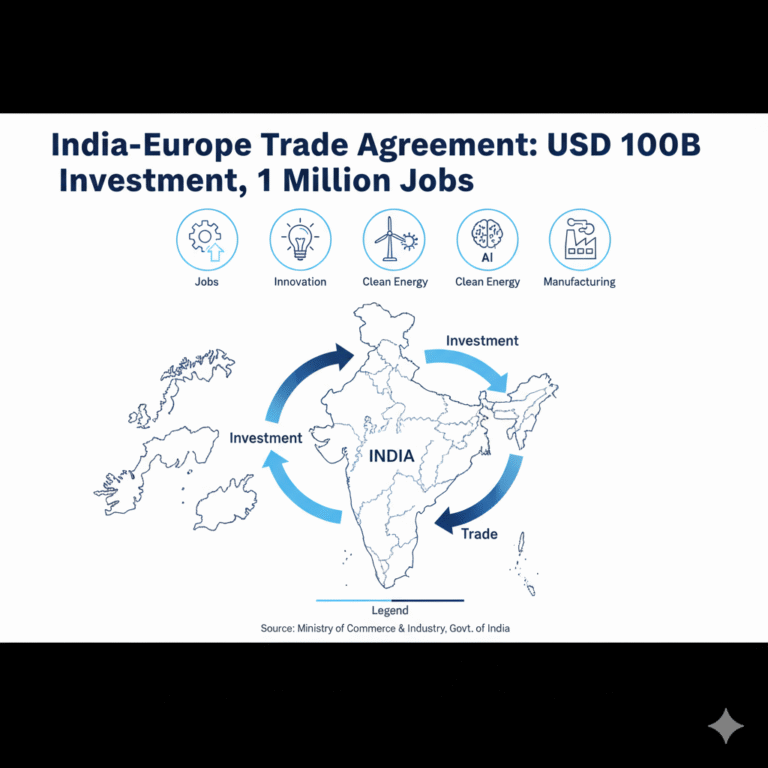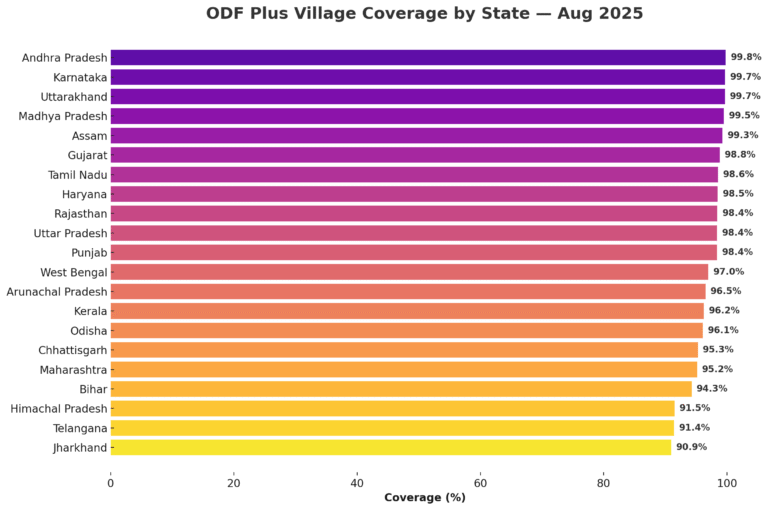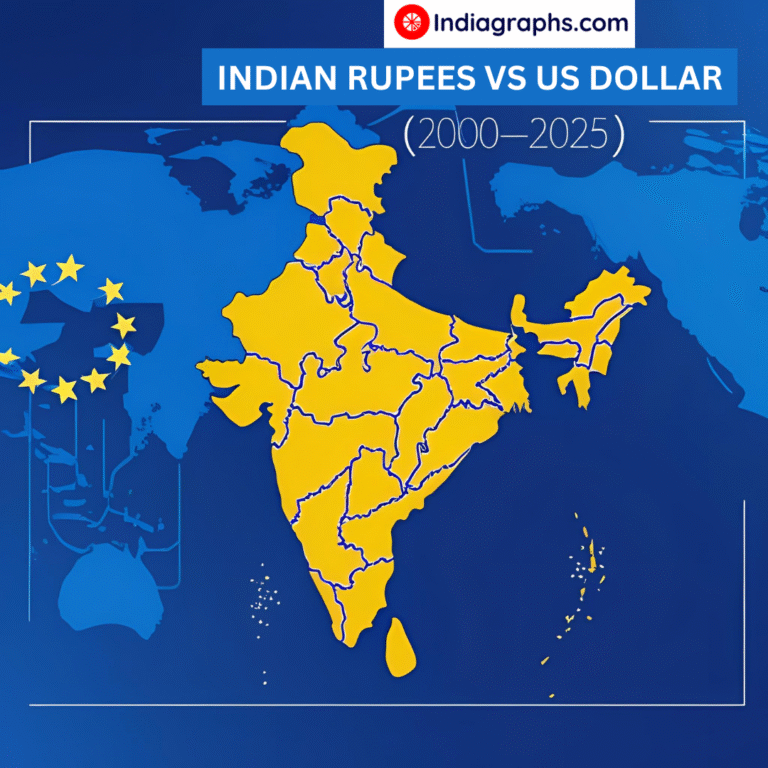India’s Banking Sector Reforms: NPAs Drop to 2.5%, 53 Crore Accounts Added
Union Home Minister and Minister of Cooperation, Shri Amit Shah, addressed the Financial Express India’s Best Banks Award ceremony in Mumbai on 25 September 2025. The event underscored how structural reforms, digital governance, and financial inclusion have reshaped the sector over the past decade.
Key Highlights from the Address:
- India’s Growth Story: Sustained 7–8% GDP growth, with 14% growth in FDI, driven by reforms, digital governance, and welfare schemes.
- Banking Reforms:
- Bad loans reduced from 19% to 2.5% under PM Modi’s leadership.
- 4R Policy – Recognize, Recover, Recapitalize, and Reforms.
- Over ₹3.10 lakh crore recapitalization through Mission Indradhanush.
- 86 major banking reforms implemented in the past decade.
- Financial Inclusion:
- 53 crore Jan Dhan accounts opened, connecting the poorest to banks.
- From 60 crore people without accounts in 2014 → near-universal coverage today.
- Digital Transactions: In 2024–25, every second digital transaction worldwide took place in India.
- Tax & Policy Reforms:
- Next-gen GST reforms led to record tax cuts.
- Make in India 2.0 boosted exports, industrial corridors, PLI schemes, and startups.
Before vs After: Banking Sector Data
| Indicator | Before Reforms (Pre-2014) | After Reforms (2025) |
|---|---|---|
| Bad Loans (NPAs) | 19% | 2.5% |
| Financial Inclusion | 60 crore people without bank accounts | 53 crore Jan Dhan accounts opened |
| Loan Disbursal (2008–14) | ₹52 lakh crore, leading to NPAs | Controlled with 4-R policy & reforms |
| Capital Infusion | Weak recapitalization | ₹3.10 lakh crore via Mission Indradhanush |
| Banking Reforms | Policy paralysis | 86 major reforms in 10 years |
| Digital Transactions (2024–25) | Not highlighted | Every 2nd digital transaction globally in India |
The discussion highlighted India’s transition from a “back-end service nation” to an “innovation nation”, with a focus on scaling banks to global top 10 status, strengthening transparency, and ensuring inclusive growth.
Source: Ministry of Home Affairs, PIB

